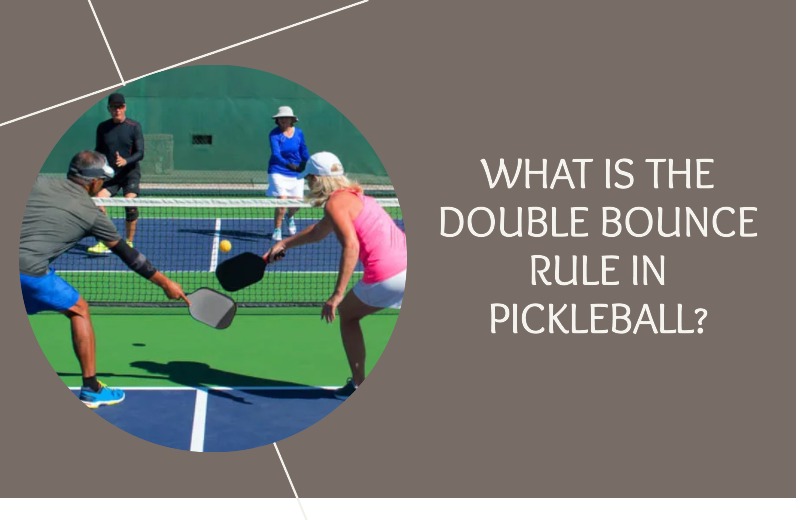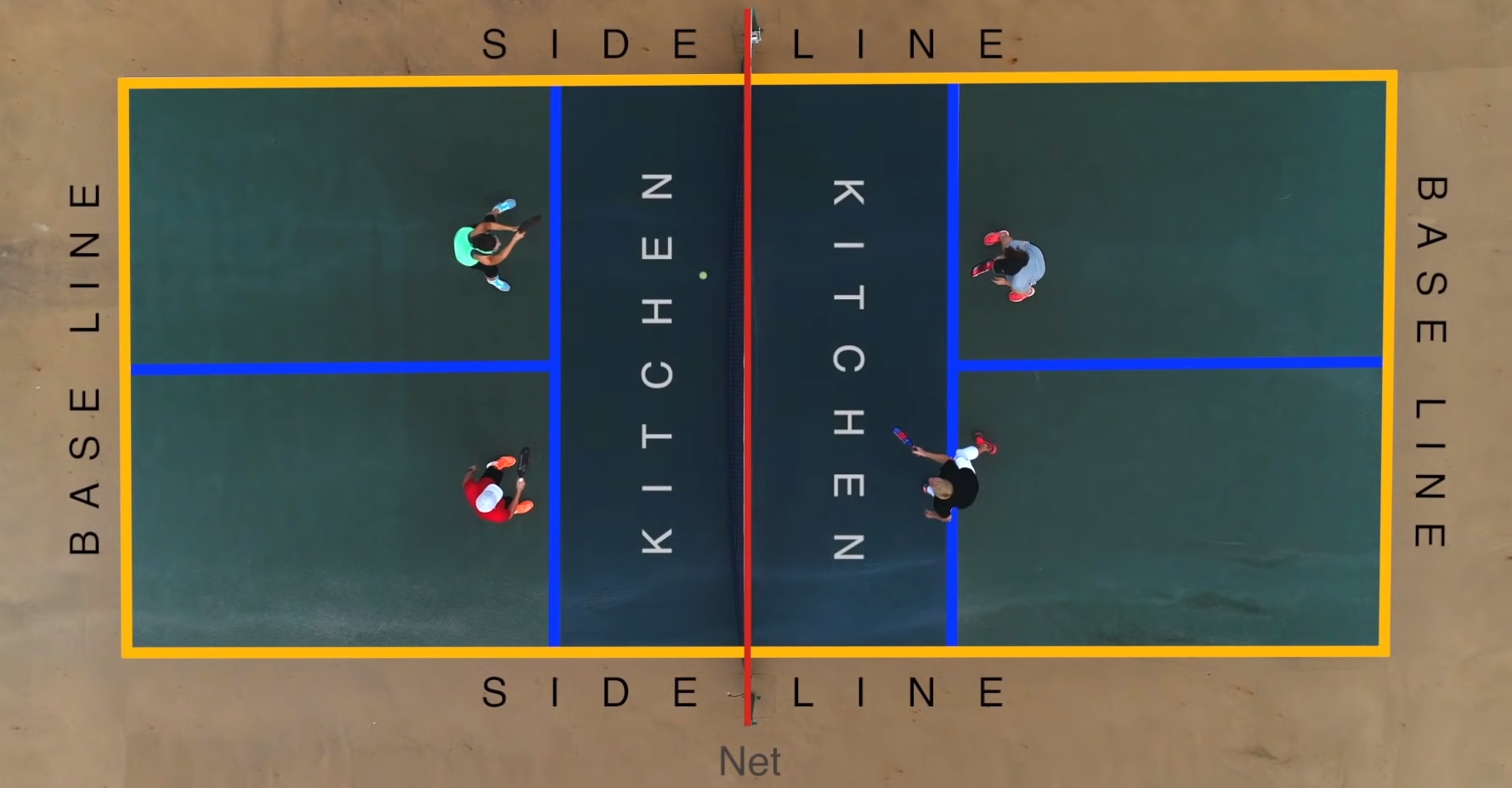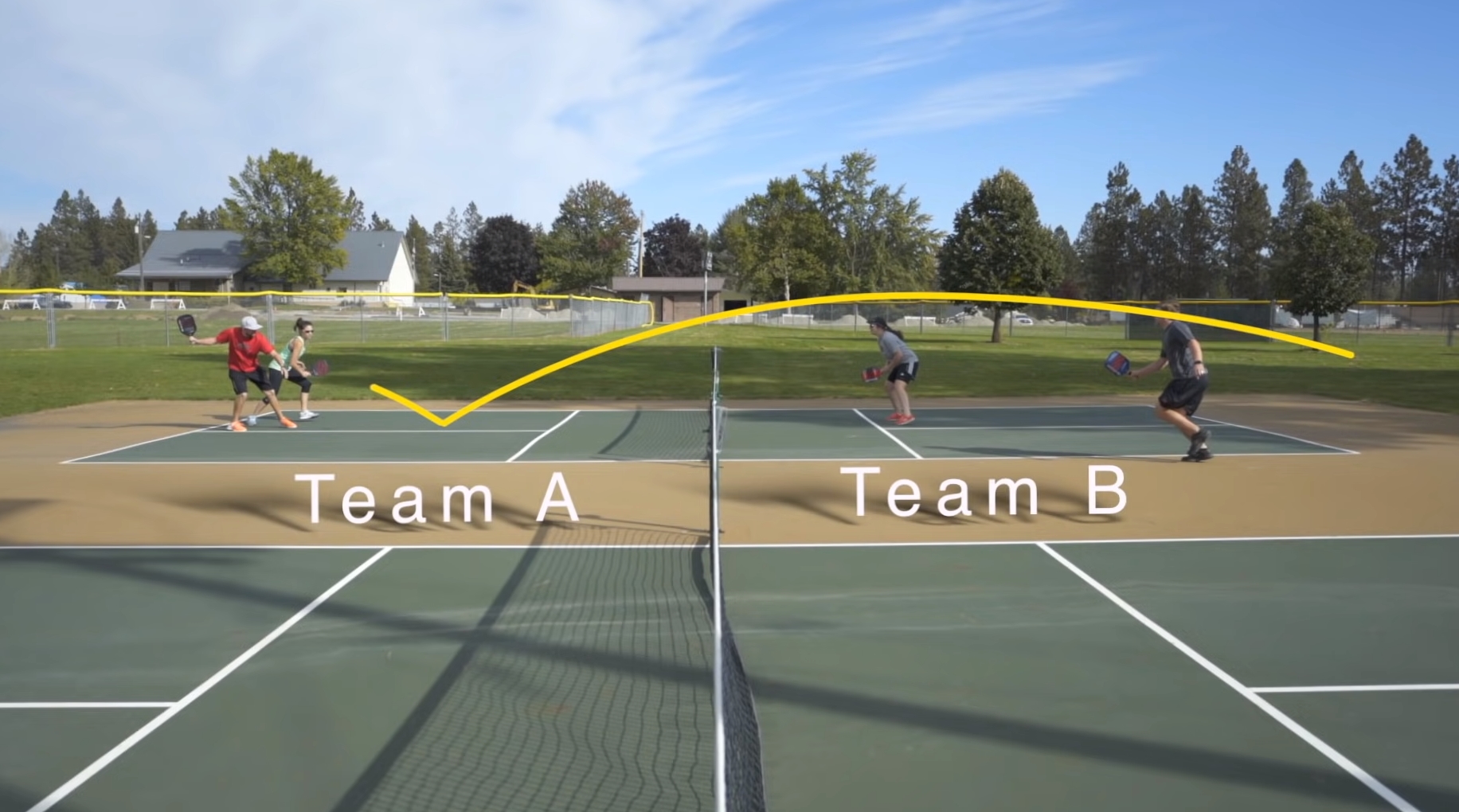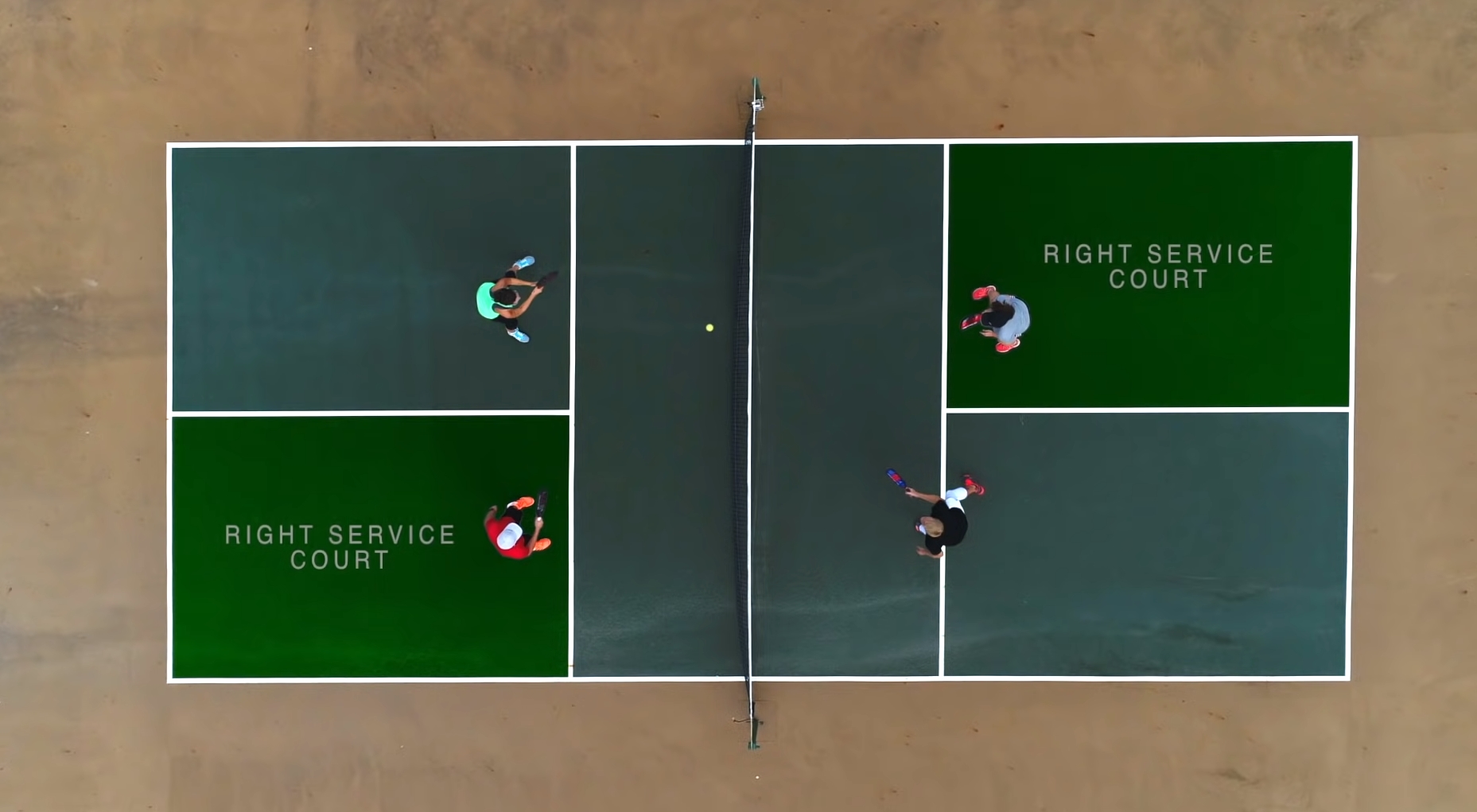What is the Double Bounce Rule in Pickleball?
So what is the double bounce rule in pickleball? Double bounce rule is a key rule in pickleball that affects how you start each point. It is part of the broader set of pickleball rules that govern the game. It states that:
Two-Bounce Rule: After the ball is served, each side must make one groundstroke prior to volleying the bounce ball.
Definition of this rules
The rule applies to three shots: the serve, the return of serve, and the shot after the return of serve. Here is an example of a point with these rules: “The receiving team must let it bounce before returning the ball.”
Mastering the Bounce Rule in Pickleball: Best Practices and Special Cases
To follow these pickleball rules correctly, you should:
- Watch your opponent’s paddle and body to anticipate their shot.
- Move back from the net when receiving or returning a serve to have more time and space and position yourself strategically on the right-hand court.
- Move forward to the net after your groundstroke to pressure your opponent and be ready for volleys.
- Communicate with your partner in doubles to avoid confusion.
- Keep in mind the importance of the non-volley zone, which is a seven-foot area adjacent to the net. According to the rules, players cannot volley the ball while standing inside this zone. This rule promotes longer rallies and strategic play near the net.
Some exceptions to the two bounce rule are:
- If your opponent’s shot bounces twice on their side before going over, you can volley it.
- If your opponent’s shot bounces twice on their side before going over during the service sequence, you can volley it.
- If your opponent’s shot bounces on your side and hits you or your paddle before bouncing again, the team commits a fault and you lose the point.
What is the Purpose of the Bounce Twice Rule?
One rule that sets pickleball apart is the rule that requires a double bounce. This rule adds a layer of strategy and skill that makes the game more engaging and fun.
How Pickleball Rules Limit the Use of Volleys and the Bounces
In my experience, volleys are typically more powerful and aggressive than groundstrokes. They can quickly turn the tide of a game if used effectively.
However, the double-bounce rule in pickleball prevents players from rushing to the net and dominating the game with volleys right from the start.
Groundstrokes and the Shift to Net Rally
Groundstrokes require more skill and finesse than volleys. They involve careful timing, precise aim, and a good understanding of your opponent’s position. The rule allows the game to shift into a net rally after the initial groundstrokes.
Fairness, Fun, and Strategy for All
The double bounce rule makes pickleball more fair, fun, and strategic for players of all levels and abilities. It prevents the game from being dominated by players with strong volleys and encourages a more balanced and strategic play style.
From Family Game to Rule Book: A Bit of History
Did you know that pickleball was invented in 1965 by three dads who wanted to create a game that their kids could play easily? This fun fact always brings a smile to my face. It’s a reminder of the inclusive and family-friendly nature of the game pickleball.
Over the years, pickleball has evolved and gained popularity worldwide. To understand the game better, it’s helpful to refer to the pickleball rule book, which provides comprehensive guidelines and regulations for players at all levels.
How to Master the Two-Bounce?
Effective Serving and Returning
Mastering the double bounce rule starts with a good serve and return. As a player, I’ve learned that a well-placed serve can set the tone for the entire rally. Aim to serve deep into your opponent’s court, forcing them to move back and hit a groundstroke. This will give you time to get into position for the next shot.
On the return, remember that the ball must bounce once before you hit it. Resist the urge to rush forward and volley the serve. Instead, stay back, let the ball bounce, and then hit a controlled return.
Transitioning from Groundstrokes to Volleys
Transitioning from groundstrokes to volleys is a crucial aspect of pickleball, especially with the bounce rule in play. After the initial serve and return, the game can shift into a net rally.
I’ve found that patience and timing are key during this transition. Wait for the right opportunity to approach the net. Remember, rushing can lead to mistakes and rule violations.
Anticipating and Reacting to Your Opponent’s Shots
Anticipating your opponent’s shots can give you an edge in pickleball. Pay attention to their body language and paddle position. This can give you clues about where they might hit the ball. Reacting quickly and accurately to your opponent’s shots is also crucial.
Serve and Transition: Double Bounce Drills
Practicing with this rule can help you internalize it. Here are some drills I’ve found useful:
- Serve and Return Drill: This drill involves one player serving and the other returning, with both players letting the ball bounce before they hit it. This drill helps reinforce the double bounce rule and improves serving and returning skills.
- Transition Drill: This drill focuses on the transition from groundstrokes to volleys. Start with groundstroke rallies from the baseline.
After a few shots, one player moves forward to the net and starts volleying, while the other player continues with groundstrokes. This drill helps players get comfortable with the transition from groundstrokes to volleys.
Court Control: Spin, Speed, Angle, Placement
Finally, using spin, speed, angle, and placement can add variety to your shots and challenge your opponent. For instance, hitting a slice shot with backspin can make the ball bounce lower, making it difficult for your opponent to return the double bounces.
Similarly, hitting the ball with topspin can make it bounce higher, throwing off your opponent’s timing. Changing the speed and direction of your shots can also keep your opponent guessing and off-balance.
What are Some Common Mistakes and Misconceptions about the Double Bounce?
Common Errors in Applying the Pickleball Double Bounce Rule
In my experience, one of the most common errors players make when applying the double bounce rule in pickleball is not paying attention to their position relative to the zone line, resulting in rule violations.
Myths and Misunderstandings about the Double Bounce Rule
There are also several misconceptions about this rule. Some players mistakenly believe that they can never volley the ball or that they must always wait for two bounces before returning the ball. This is not the case. After the ball has bounced once on each side of the court, players are free to volley the ball out of the air. Another common misunderstanding is about the double hit in pickleball, which is a different rule altogether. You can learn more about the double hit in pickleball on our website.
Examples and Scenarios to Debunk Misconceptions
Let’s consider a scenario to clarify this rule. Suppose I’m serving. After I serve, I must let the ball bounce on my opponent’s side, and they must let it bounce on my side before either of us can volley. After these two bounces, the ball can be volleyed or played off the bounce.
Variations of the Double Bounce Rule
This rule applies universally across all formats and levels of play, from singles and doubles to recreational and competitive games, and from beginner to advanced levels. However, the strategic implications of the rule can vary.
For instance, in singles play, the double bounce can create more opportunities for groundstroke rallies, while in doubles play, it can add an extra layer of strategy to the serve and return game. To understand these variations better, you can refer to the pickleball rules for doubles.
Can you let the ball bounce twice in pickleball?
What is the double bounce rule in pickleball singles?
Does the double bounce rule mean that the ball can bounce twice on your own side before hitting it?
When can the ball bounce twice before hitting it?
Can the second bounce in pickleball be in the kitchen?
Conclusion
The double bounce is a unique feature of pickleball that prevents players from volleying the serve and the return. It helps create longer rallies, improve skills, and reduce injuries.
To master it, you need to practice timing, positioning, and patience. Avoid rushing to the net or hitting the ball too hard. Playing pickleball with the double bounce rule can boost your health, fitness, and social life.
Related Article:
Pickleball Singles Rules: A Complete Breakdown for Beginners





